Disc Buying Guide for Beginners
Table of Contents
Disc golf is a very simple sport to get into. Buying your first disc (or a Starter Set) is easy and it’s free to play most disc golf courses. The more you start getting into the sport, however, the more you realize just how complex it can be. You’ll start hearing strange words like “hyzer” and “anhyzer.” Fellow players will talk about discs that are “overstable” or “understable.”
Then, you start doing research and shopping for more discs. You quickly realize there are dozens of different disc golf brands, each with hundreds of unique discs that feature different combinations of molds and plastics. It’s enough to make your head spin!
Well, don’t worry beginning disc golfers. DGU is here to help. We have put together this handy disc buying guide that will walk you through some of the basic terms and information you need to know as you are getting started with the game. Even some experienced players may benefit from this simplified disc buying guide.
By the way, you may also want to check out our “Disc Golf Dictionary” blog series, as well as our “Disc Golf 101,” “Building Your Bag” and “Disc Selection” blog categories. We have many helpful articles to help disc golfers of all levels have a better understanding of disc golf disc designs, plastics, stability and throwing techniques.
What is Disc Golf?
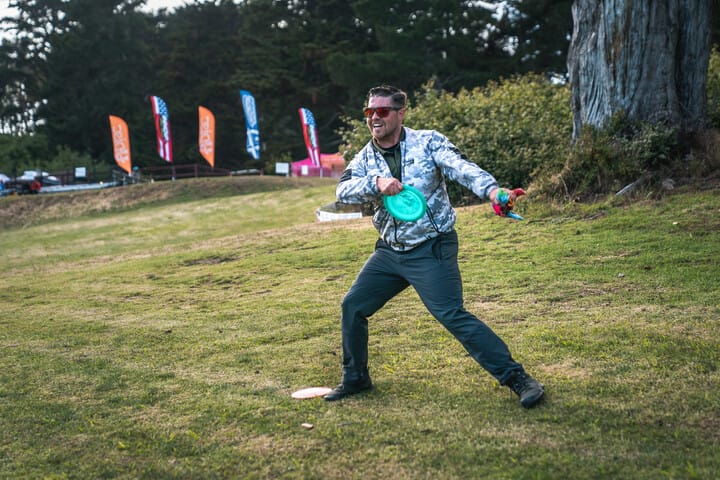
The official name for our beloved sport is “disc golf.” You may hear antiquated terms like “Frisbee golf” or you might like to call it “frolf” like George Costanza from the TV show Seinfeld. It’s true the game started with actual Frisbees, but understand that Frisbee is a brand name and registered trademark of the Wham-O toy company who popularized the plastic flying disc that spawned many different disc sports like ultimate, guts and more.
Innova Disc Golf designs and manufacturers flying discs that are specifically designed for disc golf. In fact, we were the first company to patent and produce a disc-golf-specific disc (the Eagle, U.S. Patent #4,568,297) back in 1983. Since then, we have developed hundreds of different molds and plastic blends while continuing to grow the sport through innovation and player support. Read our full history here.
Types of Disc Golf Discs

Almost all disc golf discs can be put into one of four primary categories: distance drivers, fairway drivers, mid-range discs and putters (or putt and approach discs). The categories are generally determined by the speed rating of the disc, which we will cover a little later. Most new players are primarily concerned about how far the disc will fly. However, the more you play, the more you realize the value of accuracy, control and consistency. There’s an old saying in traditional golf that also applies to disc golf: “Drive for show, putt for dough.”
Maximum Distance Drivers—Discs categorized as maximum distance drivers because they are able to cut through the air at higher speeds. They have flatter profiles, wider rims and sharper edges that provide more aerodynamic flight characteristics. These discs can fly very far, with top pros throwing in the 500-600 foot range on average. The current world distance record is 1,108 feet by Team Innova member, David Wiggins. It takes good power and proper technique to achieve the best flight out of high-speed distance drivers, so beginning disc golfers may find them harder to throw consistently. If you don’t have good form yet, you may find you get less distance and less control with these faster discs that have speed ratings of 9 or higher. Don’t be discouraged if you aren’t reaching the distance thrown by pros. Most players top out between the 300 and 400 foot range.
Fairway Drivers—Fairway drivers also have beveled edges like distance drivers, but the rims aren’t nearly as wide. They don’t fly as fast as distance drivers, but some disc golfers are able to throw them just as far—if not farther. They are generally easier to control, fly straighter (depending on the stability of the disc) and offer more natural glide than distance drivers. Fairway drivers are a good place to start if you are a disc golf beginner. They can help you learn better throwing form and develop a faster arm speed before you are ready to move up to maximum distance drivers.
Side note: Some manufacturers may also list “control drivers” or “hybrid drivers” in their disc lineups. These are usually discs in the 9-11 speed rating, somewhere in between the fastest distance drivers and slower fairway drivers. Firebirds, Thunderbirds and Wraiths would be good examples from Innova that many would put in this control/hybrid category.
Mid-Range Discs (Midranges)—These are slower flying discs with rounded edges that are less aerodynamic than drivers. Mid-range discs typically offer great glide and excellent control, which is why they are used for more accurate placement shots and approach shots (upshots). A reliable midrange will allow you to control your shot well without flying too far past your target.
Putters (Putt and Approach Discs)—These are the slowest-flying discs and have rounder, blunt edges. They are designed for maximum control and limited flight. They typically fly straight, though can come with different stability ratings just like all other disc golf discs. Some players will throw putters for placement drives and precision upshots. Then, the primary purpose is to putt with them. In most cases where you are inside 100-150 feet, you will be pulling out a putt and approach disc. They catch the chains better and offer less ground play when landing on different course surfaces.
Flight Numbers & Ratings
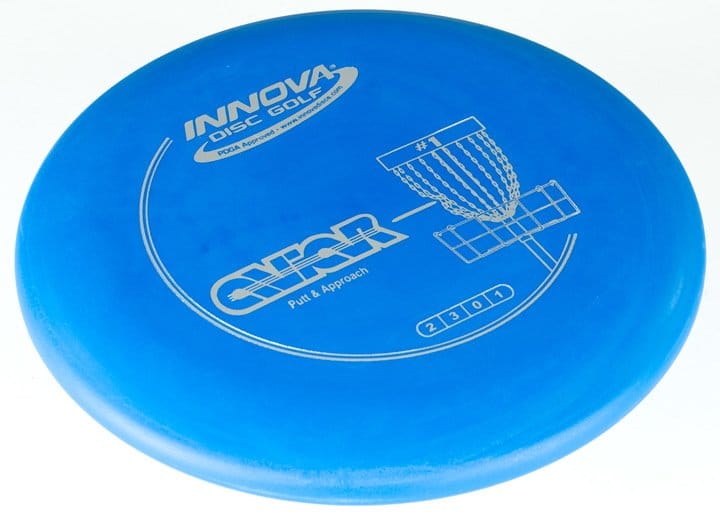
Innova was also the first company to start putting flight numbers on their discs. Many new players are confused when they see four numbers listed on the front of their discs. These are the flight ratings as determined by the manufacturer. They are there to help disc golfers understand what each disc is designed to do in the air. The first two flight numbers (speed and glide) are focused on distance characteristics. The second two numbers (turn and fade) are focused on disc stability and flight path.
Speed—The disc’s speed rating is the first number you will see. It may range anywhere from 1-14. The lowest speeds will be putt and approach discs while the highest speeds will be maximum distance drivers. Innova classifies them this way: putt and approach discs will be speeds 1-2, mid-ranges will be rated 3-5, fairway drivers are 6-8 and distance drivers are 9-14. Higher speeds only equate to longer distances when the player is able to throw the disc at proper speed. That’s why a new player may get better results out of a midrange or a fairway driver until they have built up enough power and form to throw a maximum distance driver.
Glide—This refers to the disc’s natural ability to stay in the air. Higher glide numbers generally mean the disc will fly farther than those with lower glide ratings. A disc with a lot of glide will be useful when throwing for max distance, but may be more difficult to control when putting or throwing approach shots. Again, the glide is relative to the speed. If you aren’t throwing the disc up to speed, you will not achieve the rated glide. Glide ratings will range between 1 and 7, with the higher numbers offering the most glide.
Turn—The third number on the disc is its turn rating. When you start hearing about “understability” vs. “overstability,” this is what people are talking about. If you are throwing a disc with a right-handed backhand (RHBH) throw, the turn represents how much the disc tends to move to the right during its flight path when thrown at proper speed. Turn ratings will range from -5 to 1. A disc with a -5 turn rating will be the most understable disc you can find while a disc with a 0 or 1 turn rating will be extremely overstable. It will not want to go right at all on a RHBH throw (or left for a lefty backhand thrower or righty sidearm thrower).
Fade—Lastly, the fourth number on the disc will represent the fade rating. This is the opposite of the turn rating and represents the low-speed stability of the disc. That means how much it wants to fade out left at the end of a RHBH throw. A disc with a fade rating of 4 will be very stable at the end of its flight. The less power you have, the more stability will affect your throws. Overstable discs are usually not great for beginners because it’s harder to get a full flight out of them.
Side note: Some discs will have significant turn and fade ratings. A good example of this is the Innova Sidewinder with a turn rating of -3 and a fade rating of 1. These discs are purposely designed to achieve a natural “S” flight shape where it will turn first and then fade back reliably at the end.
Remember that disc flight numbers are there to help you get a basic understanding of how each disc is meant to fly. Different variations in plastics and runs can produce slightly different flight characteristics. Plus, the more a disc gets used and “beat in,” the more its flight paths will change over time. Discs tend to become more understable with standard use and abuse. That’s why you may see some pros carrying several Destroyers that provide them with a variety of different flight characteristics while still having the same basic grip and feel.
Plastic Types
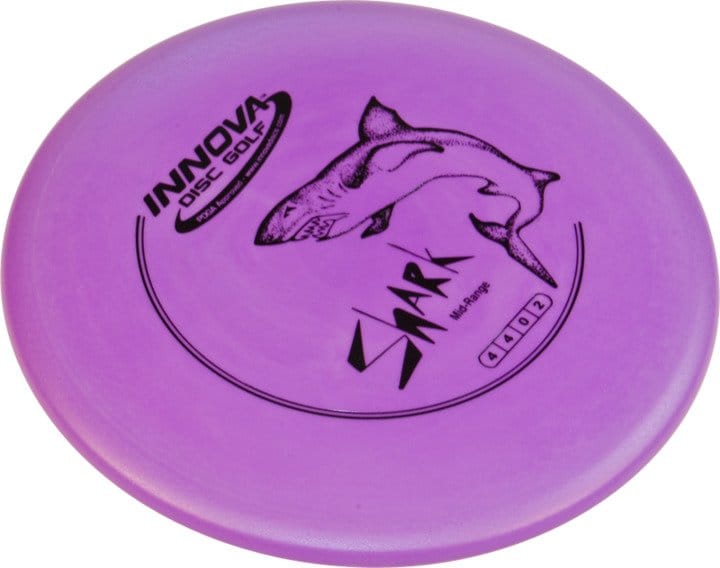
Speaking of grip and feel, you will find there are many different types of plastic used to make disc golf discs. Each will offer different grip quality in different weather situations. Durability will also vary between plastics. Premium plastics will generally last longer and stand up to more abuse. Meanwhile, some of the base plastics are preferred in some instances for better grip in cold/wet weather or because they beat in faster for understable flight paths. Different plastics used to create the same disc mold can lead to slightly different flight paths, especially as the discs are worked in over time.
Innova offers a wide variety of different plastics, rubber blends and recycled plastic blends. For a full breakdown of Innova plastic options, read this article. Here are a few of the most notable plastics in our lineup:
Star—Star is Innova’s top-of-the-line premium plastic with excellent durability and consistent flight characteristics.
Champion—Another premium plastic from Innova, Champion tends to add a little extra stability for most discs and is extremely durable.
GStar—This is a softer and more flexible Star blend that offers a great-feeling Grip. Many disc golfers prefer GStar in cold weather situations that tend to make premium plastic discs stiffer.
DX—This is our standard baseline plastic that you’ll find in our Starter Set discs. DX discs are the most affordable and will beat in quickly for added understability. They just aren’t as durable and the soft plastic blend is more prone to rim damage when you hit trees or sharp rocks.
Disc Weight
Yet another disc variation to understand is weight. Most discs weigh somewhere between 165-175 grams, with 175 being the max weight for most drivers and putters. Many mid-range discs have a slightly wider diameter and thus are PDGA-approved to have weights as high as 180 grams. Then, there are ultra lightweight discs like Blizzard Champion or DX discs from Innova that may go as low as 120 grams.
The weight of a golf disc will generally affect its flight characteristics just like the plastic, age, amount of use and other factors we’ve already discs. Lighter discs tend to be less stable and may be preferred for tailwind conditions. Heavier max-weight discs might provide additional stability or push when throwing into a stiff headwind. Weight can affect distance potential, though it really does depend on many variables. Be sure and read our full article that answers the question “Does Disc Weight Matter?”
Color
Some players may claim that different disc colors fly differently. That may be somewhat true in each run, but generally isn’t a significant factor. Choosing a disc color usually comes down to personal tastes and preferences. One player may want all pink or purple discs in their bag, while another doesn’t care and has a wide variety of colors. The types of courses you play may also affect what colors you choose. Bright colors are typically easier to find in most circumstances. Dark green or brown discs may not be ideal if playing a heavily wooded course, for obvious reasons. Stamp colors will also vary and shouldn’t affect the disc in any way. Again, the more reflective foil stamps may make them easier to find on a sunny day.
Disc Anatomy
We wrote an entire article breaking down all the different parts of a disc’s anatomy (click here to read it), but here are a few basics:
Rim—The rim is the outer edge of the disc. Drivers will have sharper beveled edges while putters will have rounded or blunt edges. The rim will vary in width, depth and shape to produce different rates of speed, glide, turn and fade.
Flight Plate—The main center body of the disc is known as the flight plate. It may be thicker, thinner or tapered depending on the disc.
Disc Diameter—Most disc golf discs will have similar diameters, usually between 21 and 21.4 centimeters in diameter. Mid-ranges may be a little wider.
Bead—Some putters and midranges will have what we call a “bead” which is a raised bottom edge along the rim of the disc. It may produce slightly different flight characteristics compared to the same disc mold without a bead. Mostly, it’s about comfort and feel for the player. Some disc golfers prefer to throw putters with beads while others don’t.
Skill Levels
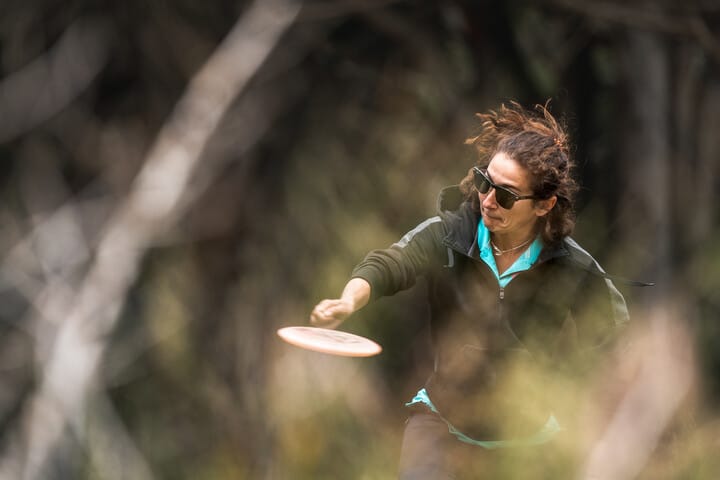
When you start playing competitive disc golf, you will find that PDGA-sanctioned tournaments (and most club events) offer different divisions. If you are a PDGA member, you will earn a rating for every round you play in any PDGA-sanctioned events. Your rating can help determine which division you play in, or you make your best judgment based on your personal experience and skill level. You do not have to be a PDGA member to play in lower-tier sanctioned events. If you aren’t sure about which division to play, it’s always a good idea to talk to the Tournament Director (TD) when signing up. They’ll be glad to offer recommendations.
Beginner (Novice/Recreational)—These are the lowest division levels you can play as an amateur. They are designed for newer players, less-skilled players and casual players who haven’t play many tournaments.
Intermediate—This is the next level up from recreational, good for moderate and experienced players.
Advanced—This is the highest level for amateur players. Amateur players can only be compensated with non-cash prizes and/or trophies. Am players in bigger tournaments will receive a “player pack” when signing up as part of their entry fee.
Open—Open divisions are for professional players. Professional disc golfers are competing for cash payouts to the top finishers in each division.
Age-Protected—Most tournaments will also offer age-protected divisions for amateur and professional players. Players who are over the age of 40, 50, 60, etc. or juniors under the age of 18 can play in designated divisions if the event offers them.
Though there is a lot to learn, disc golf is not really a complicated sport to pick up. It’s very easy to get started with just a few cheap discs. As you get better and want to expand your skills, you can delve deeper and deeper into the intricacies of flight numbers, disc molds, plastics, tournament rules, and so on. Don’t let any of this information intimidate you. Hopefully, you find it helpful as a beginner.
And always remember the most important rule of disc golf is to “have fun!”
What's Next?
Need help finding the perfect disc for a specific shot, better accuracy, or more distance? We’re here to help! Just follow the link below to answer a short questionnaire. We’ll send you FREE personalized disc recommendations within 1 business day along with a coupon code for $5 off your next order.
GET PRO TIPS

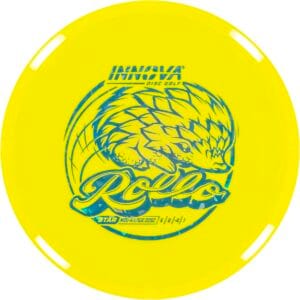

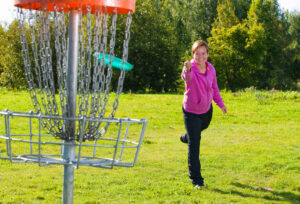
3 comments